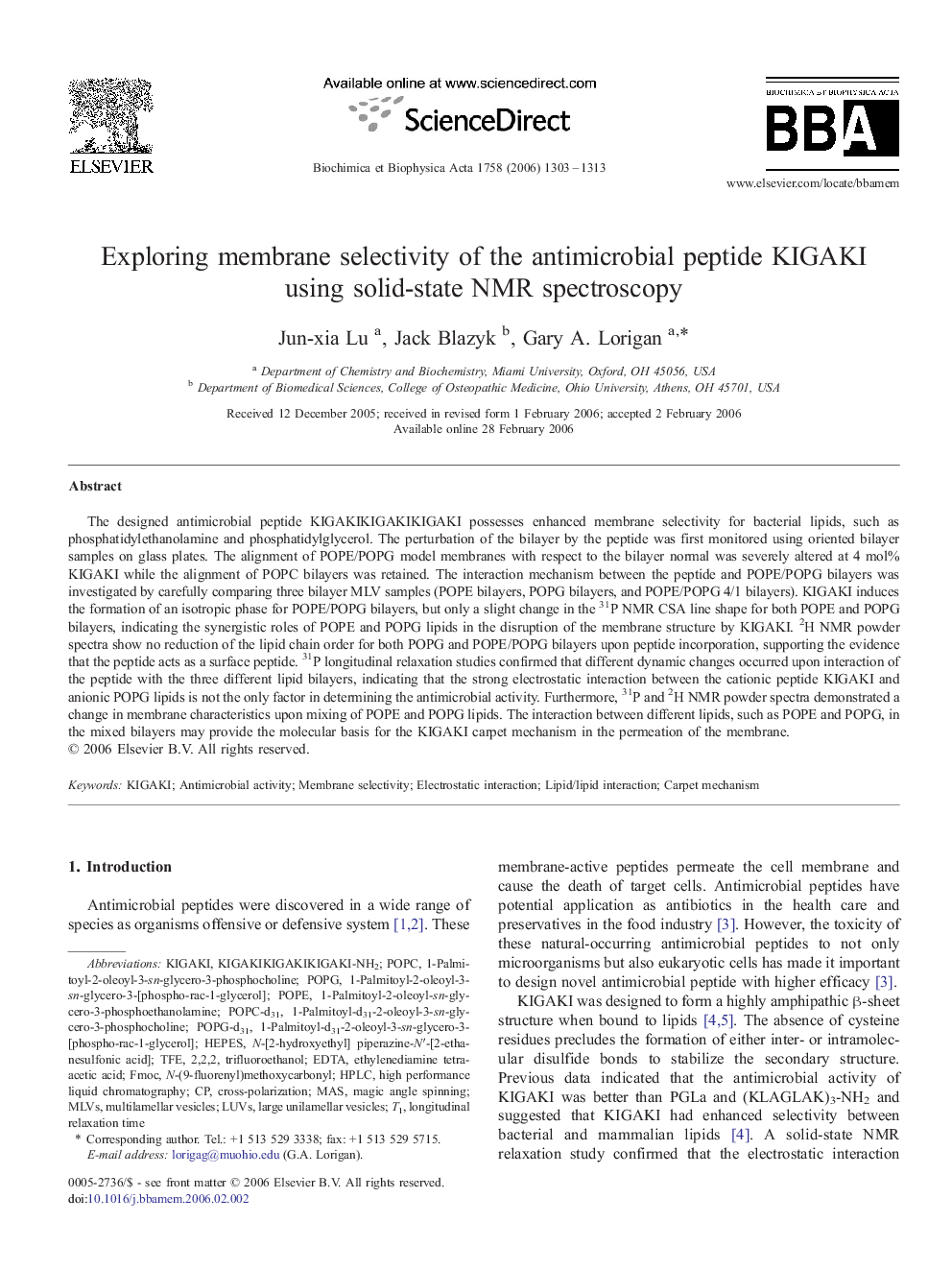| Article ID | Journal | Published Year | Pages | File Type |
|---|---|---|---|---|
| 1946021 | Biochimica et Biophysica Acta (BBA) - Biomembranes | 2006 | 11 Pages |
The designed antimicrobial peptide KIGAKIKIGAKIKIGAKI possesses enhanced membrane selectivity for bacterial lipids, such as phosphatidylethanolamine and phosphatidylglycerol. The perturbation of the bilayer by the peptide was first monitored using oriented bilayer samples on glass plates. The alignment of POPE/POPG model membranes with respect to the bilayer normal was severely altered at 4 mol% KIGAKI while the alignment of POPC bilayers was retained. The interaction mechanism between the peptide and POPE/POPG bilayers was investigated by carefully comparing three bilayer MLV samples (POPE bilayers, POPG bilayers, and POPE/POPG 4/1 bilayers). KIGAKI induces the formation of an isotropic phase for POPE/POPG bilayers, but only a slight change in the 31P NMR CSA line shape for both POPE and POPG bilayers, indicating the synergistic roles of POPE and POPG lipids in the disruption of the membrane structure by KIGAKI. 2H NMR powder spectra show no reduction of the lipid chain order for both POPG and POPE/POPG bilayers upon peptide incorporation, supporting the evidence that the peptide acts as a surface peptide. 31P longitudinal relaxation studies confirmed that different dynamic changes occurred upon interaction of the peptide with the three different lipid bilayers, indicating that the strong electrostatic interaction between the cationic peptide KIGAKI and anionic POPG lipids is not the only factor in determining the antimicrobial activity. Furthermore, 31P and 2H NMR powder spectra demonstrated a change in membrane characteristics upon mixing of POPE and POPG lipids. The interaction between different lipids, such as POPE and POPG, in the mixed bilayers may provide the molecular basis for the KIGAKI carpet mechanism in the permeation of the membrane.
